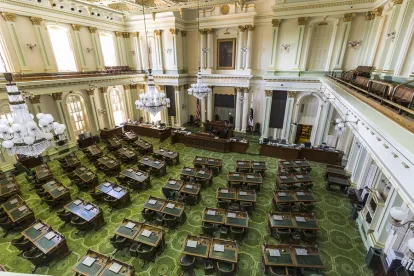On September 9, 2020, Governor Gavin Newsom signed Assembly Bill (“AB”) 1867 into law, expanding California’s supplemental paid sick leave requirements for employers with 500 or more employees nationwide and creating two new sections of the California Labor Code.
California law previously provided up to 80 hours of COVID-19 supplemental paid sick leave to food sector employees whose work required leaving their home. AB 1867 codifies this requirement at California Labor Code section 248.
AB 1867 also creates California Labor Code section 248.1, which expands California’s supplemental paid sick leave requirement to all private employers with 500 or more employees in the United States, and public and private employers of health care providers or emergency responders who were previously excluded from federal emergency paid sick leave requirements. The requirement also applies to unionized employees.
This provision went into effect on September 19, 2020. It is currently set to expire on December 31, 2020, or upon the expiration of the Emergency Paid Sick Leave Act, whichever is later. The Emergency Paid Sick Leave Act is currently set to expire on December 31, 2020, although this may be extended as the new year approaches.
When Can Supplemental Paid Sick Leave be Used?
The supplemental paid sick leave created by California Labor Code sections 248 and 248.1 can be used when an employee cannot attend work due to: (1) a federal, state, or local quarantine or isolation order related to COVID-19; (2) self-quarantine or self-isolation related to COVID-19 as advised by a healthcare provider; or (3) the employer requiring the employee to stay home from work due to health concerns related to transmission of COVID-19.
California’s new supplemental paid sick leave differs from the federally provided paid sick leave in that it cannot be used to enable an employee to care for an individual subject to quarantine or to provide child care for their child whose school or place of care is closed due to COVID-19.
How Much Leave Must be Provided?
Employees are entitled to 80 hours of supplemental paid sick leave if they are: (1) a full time employee; or (2) scheduled to work, or did work, an average of 40 hours or more per week in the two weeks prior to taking leave. The maximum amount of supplemental paid sick leave required under AB 1867 is 80 hours, unless the employee is an active firefighter as defined by the statute.
Active firefighters who were scheduled to work more than 80 hours in the two weeks prior to taking leave are entitled to supplemental paid sick leave time equal to the same number of hours of leave as the firefighter was scheduled to work during that two-week time period.
Employees who are not full-time, but have a regular weekly schedule, are entitled to supplemental paid sick leave time equal to the number of hours the employee normally works in a two-week period.
Part-time employees whose schedules vary are entitled to 14 times the average number of hours worked per day over the six months prior to the first date of supplemental paid sick leave (or over all days worked, if the employee has worked for the employer for less than six months but more than 14 days). For example, if an employer has a part-time employee whose schedule varies from approximately five to 15 hours per week and who has worked for the company more than six months, the employer would calculate the average number of hours the employee has worked over the six months prior to the first date of leave, and then multiply this number by 14 to arrive at the number of hours of leave the employee is entitled to.
If a part-time employee with a variable schedule has worked for the employer for less than 14 days, the employee is entitled to the same number of hours of supplemental paid sick leave as the employee has worked for the employer in total.
How Can Supplemental Paid Sick Leave Be Used?
An employee may determine how much of the available leave to use. An employer cannot require the employee to use any other paid or unpaid leave, paid time off, or vacation time provided, before or in lieu of, supplemental paid sick leave. An employer also must provide supplemental paid sick leave in addition to any paid sick leave that may be available to an employee under California Labor Code section 246.
How Should An Employee Be Paid For Supplemental Paid Sick Leave?
Supplemental paid sick leave must be paid at the higher of: (1) the employee’s regular rate of pay for the last pay period (including any collectively bargained-for pay rate); (2) the state minimum wage; or (3) the local minimum wage. However, the employer is not required to pay an employee more than $511 a day, or $5,110 total.
Credit for Paid Sick Leave Already Provided
If an employer previously allowed an employee to take supplemental paid leave (for instance, under the federal Families First Coronavirus Response Act) that could have been used for the same reasons as supplemental paid sick leave, at an equal or higher rate of pay, the employer may count the hours of that leave towards the hours required by California Labor Code section 248.1.
Additionally, if an employer previously provided supplemental paid leave to an employee that could be used for the same reasons as supplemental paid sick leave, but did not compensate the employee at the rate required by the statute, the employer may be able to credit the paid leave provided towards the required amount of supplemental sick leave. To do this, the employer must retroactively provide the employee supplemental pay equal to the difference between the rate previously paid for the leave and the rate of pay the employee is entitled to for supplemental paid sick leave.
Are There Notice and Recordkeeping Requirements?
This is California, so of course there are! The California Labor Commissioner created a model notice, found here, which employers must post at the workplace, or send to employees who do not frequent the workplace via email or other electronic means. Employers must keep records of compliance for three years. Employers must also state the amount of supplemental paid sick leave available to the employee either on the employee’s pay stubs, or in a separate writing provided on designated pay dates.



 />i
/>i
